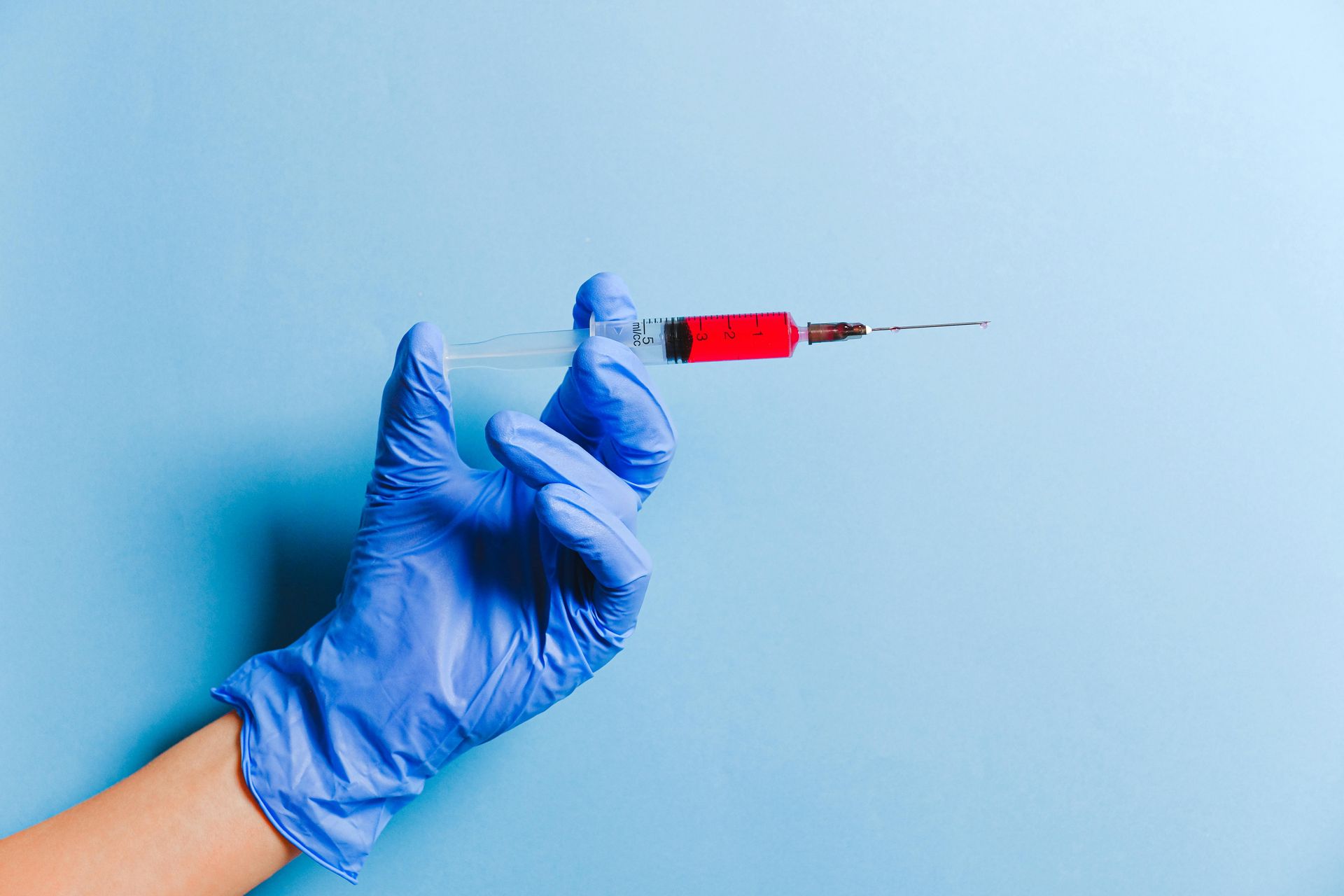
The Flu: Then and Now

By now, everyone has heard of the flu and is familiar with the annual 'flu season. But you may not know that the flu we encounter yearly is a descendant of the Spanish flu.
The Spanish flu is a variation of the H1N1 strain found by examining infected bodies preserved in the permafrost in Alaska. It is the same strain responsible for millions of deaths in 1918 and became known as the worst pandemic in history.
History of the flu
The worst influenza outbreak came early in 1918 but had three major waves within that year.
The first wave in the spring had mild symptoms, with minimal casualties.
The second wave came in the fall of 1918 and was the deadliest of the 3. Officially there were approximately 45 million deaths worldwide, but that number is now considered extremely low. New estimates range from 50-100 million lives lost.
An article published by the Centers for Disease Control states, "More people died during the 1918 pandemic than the total number of military and civilian deaths that resulted from World War I."
It didn't start in Spain.
.
Initially, Spain was the only country whose media widely reported on the pandemic. Countries like the U.S., Russia, and Britain, who were involved in WW1, were not reporting on it to keep the morale high with the troops.
The perception was since Spain was reporting it, it must have originated there. However, that was not the case. Spain had relatively low numbers because they were not participating in the war and, therefore, did not have large numbers of troops sharing small spaces.
Treatments for Spanish flu
Because scientists didn't know what they were dealing with at the time, there were no vaccines or effective treatments. So instead, doctors gave out aspirin, hoping to heal it, but that proved more harmful than helpful. Some historians believe many individuals died from salicylic poisoning, as patients received more than 30 grams of aspirin daily.
Aspirin was a relatively new drug then, and doctors did not yet understand the side effects and effective ranges. (Today, doctors recommend no more than 4 grams daily.)
Influenza, 100 years later
The flu virus transmits through respiratory droplets, such as when saliva ejects from the mouth or nose while coughing or sneezing.
Research shows that the virus can live outside the body for 48 hours on hard surfaces like metal, glass, and plastic. It can also survive for around 12 hours on soft surfaces such as clothes and fabrics.
Cleaning
It is essential to clean and disinfect surfaces and wash any clothes, pillows, or blankets exposed to the virus to eliminate it. When working with hard surfaces, clean the area first if it has visible dirt, then rinse and use the appropriate EPA-registered disinfectant. Keep in mind that often the surface needs to remain wet with the product for 3-5 minutes to remove all germs effectively.
Who is High Risk?
Young children and those 65 years and older are at a higher risk than the general population. In addition, individuals who are immunocompromised or have a coexisting medical condition may also be at an increased risk.
Speak with your doctor if you have an underlying medical condition or cannot receive the flu vaccination.
Prevention
As we all know, preventive measures can keep us healthy during cold and flu season. Here are a few ways to practice healthy habits to keep sickness at bay:
- Get your yearly flu vaccine. It is available for ages six months and older.
- Wash your hands with soap and water. Washing your hands is the best way to prevent the spread of disease.
- Cover coughs and sneezes with a tissue or the inside of your elbow. Avoid coughing or sneezing into your hands to reduce the spread of droplet contamination.
- Avoid close contact with people who are sick. Keeping a distance of six feet between you and others can significantly reduce the spread of respiratory illness.
- Avoid touching your eyes, nose, and mouth. This is how viruses enter our bodies.
- Clean and disinfect contaminated surfaces and objects. This kills the virus and reduces the risk of contamination.
- If you have the flu, stay home until you are fever free for at least 24 hours without fever-reducing medications.
Conclusion
While the flu strain has modified itself over the years, many characteristics have not changed.
However, what has evolved is the science we use to manage viruses and other medical challenges. Research has allowed us to understand their ability to mutate, which lets us predict and better prepare for upcoming mutations. This is seen yearly in vaccine modifications, which better protect us from new strains. The flu remains a serious virus and can potentially be life-threatening. However, with the knowledge of basic hygiene, prevention measures, and the understanding of how viruses work, we can avoid a recurrence of a flu pandemic in the magnitude of 1918.
Sources:
Aspirin Misuse May Have Made 1918 Flu Pandemic Worse -- ScienceDaily
How To Clean and Disinfect Schools To Help Slow the Spread of Flu | CDC
Why the Second Wave of the 1918 Flu Pandemic Was So Deadly - HISTORY
10 Facts About the Flu: Symptoms, Vaccine, and More (healthline.com)
1918 Pandemic Influenza: Three Waves | Pandemic Influenza (Flu) | CDC
Thank you for reading Patient Education Essentials, the Write Shift RN blog.
Disclaimer: This article was written as a guest post for Write Shift RN LLC's blog. The information in it may not be wholly fact-checked or edited, allowing the reader to see the writer's work and skills firsthand. This information is not intended as medical advice. It is for informational and educational purposes only. Always talk to your doctor or other qualified healthcare providers about any questions or concerns you may have regarding medical conditions.










